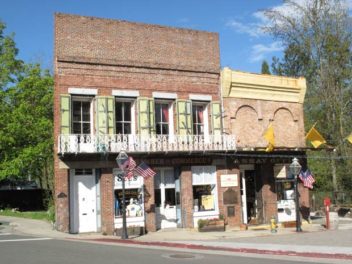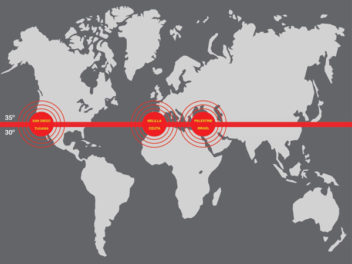
The Beehive is perhaps one of the coolest office spaces to work in. From the outside, it seems like the whole building could spin. 19, Beehive, 1988, Eric Owen Moss.
Can architecture be considered art? Culver City leaders believe it can. That’s because the city took the unique, and some would say controversial, step of adding architecture to its Art in Public Places Program in 1995. Already a hub for architects with practitioners such as Thomas Mayne, Eric Owen Moss, and Steven Ehrlich establishing studios there, Culver City uses its Architecture as Art program to shine a light on some of the innovative and ground-breaking work being created in the city.
Culver City’s Art in Public Places Program got its start in 1988. Like similar programs, the goal is to help mitigate the impact of development by requiring new commercial, industrial, public, and large-scale residential buildings either to support the arts by contributing to the City’s Cultural Trust Fund, to purchase or commission an original work of art for the site, or to donate a work of art for installation elsewhere in the city. Before the city added architecture as an option, eligible works of art included site-specific sculptures (including functional sculptures), paintings, works on paper, mosaics, and murals.

The facade of the Studio Pali Fektete Architects building acts as both a rain screen and shading system. Each panel varies in detail, reflecting the variety of activities the building is used for. 15 Studio Pali Fekete Architects Building and MODAA Lofts, 2005, SPF: architects.
What’s so important about public art? “Public art can contribute to defining a city’s identity and to unifying its vision,” Christine Byers, the city’s public art & historic preservation coordinator, told me. “By engaging the urban landscape, Culver City’s public art program brings the experience of art to a broad and diverse group of people. The goal of the program is to balance the community’s physical growth and revitalization with its cultural and artistic resources, resulting in improving the general welfare of the city, and increasing the availability of art to the public.”
At the time the city was entertaining the option of expanding the public art program to include architecture, both artists and art critics denounced the move—stating that it would have a negative impact on working artists. As Los Angeles Times art critic Christopher Knight wrote at that time, “While its supporters have claimed the change as a visionary recognition of architecture’s civic significance, the acknowledgement has come at the cost of art. With one hand it places a laurel wreath on the architect’s head, with the other it shoots the artist out of sight.”
But developer Frederick Smith and architect Eric Owen Moss, who first brought the idea forward to the city, argued that the artistic quality of some buildings warranted that a building, or parts of it, be categorized as art. The two have worked together for years developing the city’s Hayden Tract, and Moss is known for his conceptually challenging designs. Their point of view was supported by Elizabeth Smith, then curator at the Museum of Contemporary Art, who co-curated MOCA’s 2001 exhibition The Architecture of R.M. Schindler, and former MOCA director Richard Koshalek. The City Council ultimately agreed, and the Architecture as Art Program was created.

The entry to Nueva is both a functional site entrance and a conservation point. The sculpture energizes the environment, symbolizing the inspiring and enigmatic power of text and words in the creative process. Nueva, 2011, Tom Farrage. 3440 Wesley Street (Morphosis Architects)
“When we added architecture as a category, we maintained the same disciplined review process that we follow for more traditional works of public art to ensure the integrity of the program,” Christine said. “Plans for the work are submitted to the city and undergo a peer review process before going before the Cultural Affairs Commission for a vote on whether or not to approve the application.”
Today, of the more than 90 individual artworks included in Culver City’s public art collection, five were commissioned under the Architecture as Art program. Four are by Eric Owen Moss, and the fifth is by SPF:architects (who also worked on the Getty Villa renovation). You can take a virtual tour of the city’s public art, including its architecture, here.




Comments on this post are now closed.
Trackbacks/Pingbacks